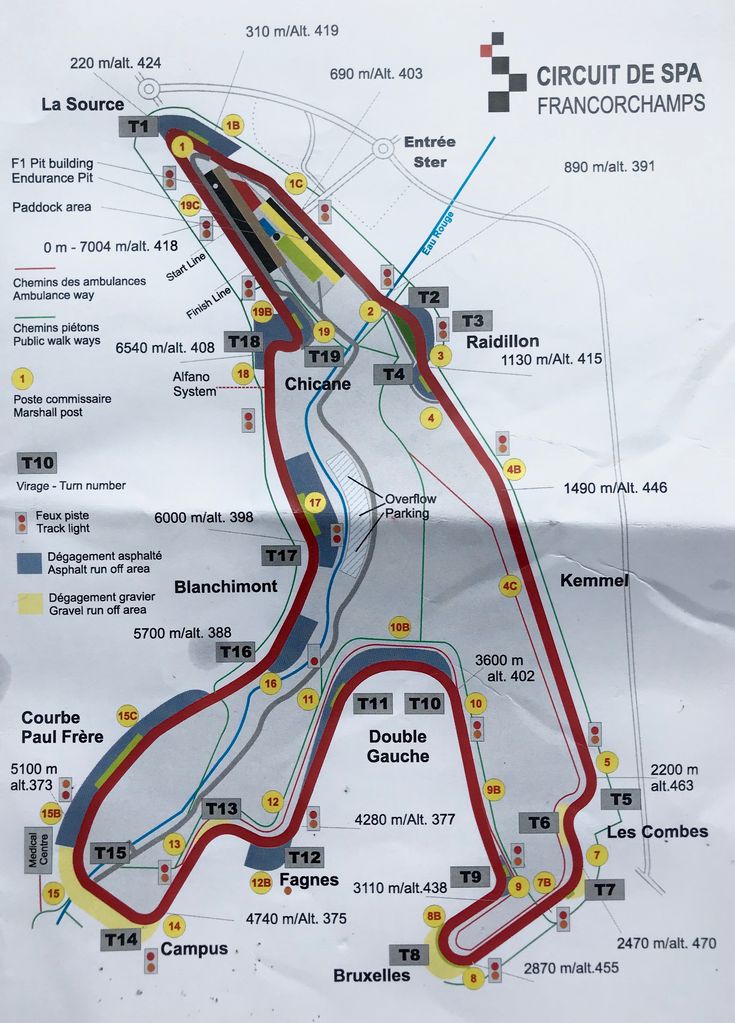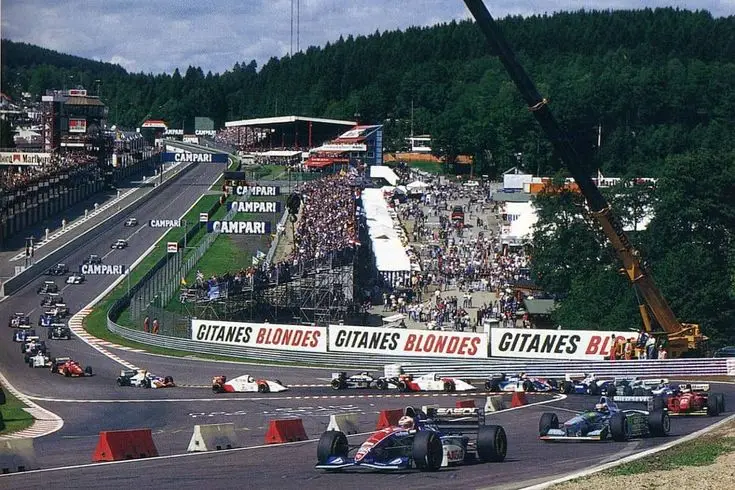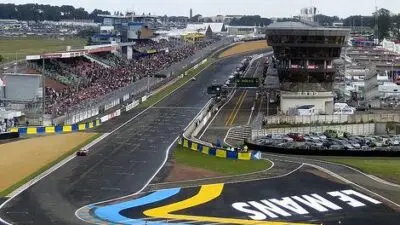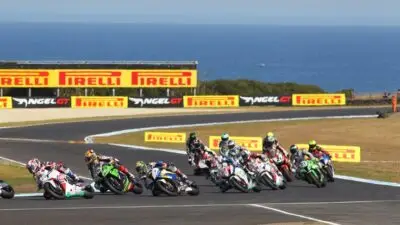The Circuit de Spa-Francorchamps in Belgium stands as one of motorsport’s most challenging and respected racing venues. This 7.004-kilometer track has hosted Formula One racing since 1925 and continues to test drivers with its demanding layout through the Ardennes forest. Located near the town of Spa, the circuit combines high-speed sections with technical corners that separate skilled drivers from the rest.

Racing at Spa requires drivers to master elevation changes, unpredictable weather, and corners that have become legendary in motorsport history. The track’s unique character comes from its use of public roads that wind through Belgian countryside. Spa’s racing history dates back to 1921 when designers created a triangular course connecting local towns.
Modern safety improvements have made Spa safer while keeping its challenging nature intact. The circuit hosts multiple racing series throughout the year, from Formula One to endurance racing. Drivers and fans consider it one of the most beautiful and demanding tracks in the world.

Key Takeaways
- Spa-Francorchamps is a 7.004-kilometer Belgian circuit that has hosted Formula One racing since 1925
- The track challenges drivers with elevation changes, weather variations, and a mix of high-speed and technical sections
- Spa remains one of motorsport’s most respected venues while hosting various racing series beyond Formula One
History of Racing at Spa-Francorchamps

The Circuit de Spa-Francorchamps began as a triangular course using public roads in 1921 and evolved into one of motorsport’s most respected venues. The track’s development involved multiple layout changes, hosted its first Formula One race in 1925, and underwent extensive safety modifications to meet modern racing standards.
Origins and Early Development
Motor racing gained popularity in Belgium after World War I, with the Ardennes region hosting various races before focus shifted to Spa-Francorchamps. The area was previously known for its healing waters rather than motorsport.
Designers Jules de Thier and Henri Langlois van Ophem created the original track in 1921. They formed a triangular circuit using public roads connecting three towns: Francorchamps, Malmedy, and Stavelot.
The original layout measured approximately 15 kilometers (9.3 miles). This made it one of the longest circuits in motorsport at the time.
The track’s location in Wallonia, Belgium, provided natural elevation changes through the Ardennes Forest. These features would become defining characteristics of the circuit’s challenging nature.
Evolution of the Track Layout
The circuit underwent major modifications throughout its history to improve safety and modernize facilities. The current configuration measures 7.004 kilometers (4.352 miles), significantly shorter than the original triangular course.
Key Layout Changes:
- 1921-1939: Original triangular public road circuit
- 1950s-1970s: Various safety modifications while maintaining much of the original route
- 1979-1981: Major reconstruction creating the modern shortened layout
- 2000s-Present: Continuous updates to meet FIA safety standards
The modern track retained famous sections like Eau Rouge and Blanchimont. These corners maintained the circuit’s reputation for speed and technical difficulty.
Track width increased from the narrow public roads to modern racing standards. New pit facilities and grandstands replaced basic infrastructure from earlier decades.
Significant Events and Milestones
The Circuit de Spa-Francorchamps hosted its first Grand Prix in 1925. This established the venue as a premier motorsport destination in Europe.
A non-championship Grand Prix took place at Spa in 1924, one year before the official championship event. This earlier race helped prove the circuit’s capabilities for major competitions.
The track became a regular Formula One venue and also hosts the 24 Hours of Spa endurance race. Multiple racing series use the circuit throughout the year.
Weather plays a significant role in Spa’s racing history. Approximately 29% of races have occurred in rain conditions, creating additional challenges for drivers.
Famous victories and memorable moments occurred regularly at Spa. The circuit’s combination of speed and technical sections produced exciting racing across different motorsport categories.
Safety Improvements Over the Years
Early racing at Spa involved minimal safety measures due to its public road origins. Barriers consisted mainly of hay bales and basic fencing along the circuit perimeter.
The 1970s brought increased focus on driver safety following several serious accidents. New armco barriers replaced inadequate protection systems throughout the track.
Modern safety features include:
- Gravel traps at key corner exit points
- Tire barriers in high-impact zones
- SAFER barriers at critical locations
- Improved run-off areas where space permits
Medical facilities upgraded significantly from basic first aid stations. The circuit now maintains fully equipped medical centers with helicopter landing capabilities.
Track surface improvements reduced standing water issues that historically caused accidents. Better drainage systems help manage the frequent rain that affects racing at Spa.
Legendary Races and Championships

The Circuit de Spa-Francorchamps has hosted Formula 1 since 1925 and remains one of the sport’s most respected venues. The track also features the famous 24 Hours of Spa endurance race and various other championship events throughout the racing calendar.
Belgian Grand Prix Legacy
The Belgian Grand Prix stands as one of seven tracks from the inaugural 1950 World Championship. This Formula 1 race has produced some of motorsport’s most memorable moments over nearly a century of competition.
The 2025 Belgian Grand Prix marked round 13 of the F1 season. The race continues the Moet & Chandon Belgian Grand Prix tradition at the legendary circuit.
Weather often plays a major role in Belgian Grand Prix outcomes. Rain frequently creates dramatic racing conditions that separate skilled drivers from the rest of the field.
Several legendary battles have become part of Formula 1 folklore. These races showcase drivers fighting for victory on one of the most challenging tracks in the championship.
The track’s 4.352-mile length allows for spectacular overtaking opportunities. Drivers can showcase their skills through the famous corners like Eau Rouge and Blanchimont.
24 Hours of Spa Endurance Race
The 24 Hours of Spa represents one of motorsport’s premier endurance events. This race tests both driver skill and mechanical reliability over a full day of competition.
Teams must balance speed with consistency to survive the grueling race distance. The event attracts top manufacturers and professional racing teams from around the world.
Night racing adds another challenge as drivers navigate the circuit in darkness. Weather changes during the 24-hour period often create additional strategic decisions for teams.
The race forms part of various endurance racing championships. GT3 cars typically dominate the entry list, providing close competition throughout the field.
Other Notable Motorsport Events
Spa hosts the FIA World Endurance Championship and other major racing series. These events maintain the circuit’s status as a premier motorsport venue beyond Formula 1.
The Spa Classic 2025 featured historic racing with thrilling competition. Rain added drama to the vintage car races at the Belgian circuit.
Various junior formula series use Spa as a proving ground for future stars. These championships help develop the next generation of professional racing drivers.
Motorcycle racing also takes place at the circuit during certain events. The track’s flowing layout suits both cars and bikes for exciting competition.
Track Layout and Key Features

The Circuit de Spa-Francorchamps features a demanding 7.004-kilometer layout with 20 corners that challenge drivers with massive elevation changes and high-speed sections. The track combines legendary corners like Eau Rouge and Raidillon with long straights and technical sections.
Current Circuit Configuration
The modern Spa-Francorchamps circuit layout uses a mix of permanent racing surface and modified public roads. The track flows counterclockwise through the Ardennes Forest with dramatic elevation changes throughout.
Drivers start at La Source hairpin before dropping down the hill toward Eau Rouge. The circuit then climbs through Raidillon and continues to Les Combes chicane at the highest point.
From Les Combes, the track descends through fast sweeping corners toward the back section. The layout includes multiple chicanes and technical corners before returning to the main straight.
The current configuration maintains the character of the original triangular route. However, safety improvements have modified several corners while preserving the track’s challenging nature.
Famous Corners and Sections
La Source serves as Turn 1, a tight hairpin that often creates first-lap incidents. This corner requires heavy braking and precise positioning for the run down to Eau Rouge.
Eau Rouge and Raidillon form the most famous corner complex in Formula 1. Eau Rouge is the left-hand kink at the bottom, while Raidillon climbs steeply uphill to the right.
Les Combes chicane sits at the track’s highest point. This section tests braking performance and car setup as drivers navigate the sharp left-right combination.
The Kemmel Straight provides the main overtaking opportunity. This long straight follows Raidillon and allows cars to reach top speeds before Les Combes.
Circuit Length and Specifications
| Specification | Details |
|---|---|
| Circuit Length | 7.004 kilometers |
| Number of Turns | 20 |
| Race Distance | 44 laps (308.052 km) |
| Lap Record | 1:41.252 (Valtteri Bottas, 2018) |
Spa-Francorchamps holds the distinction as the longest track on the F1 calendar. The circuit’s length creates unique strategic challenges for tire management and fuel consumption.
The track features significant elevation changes of over 100 meters. The climb from Eau Rouge to Raidillon alone rises approximately 40 meters in just a few hundred meters.
Weather conditions can vary dramatically across different sections due to the circuit’s length and location in the Ardennes Forest.
Driving Experience at Spa-Francorchamps

Spa-Francorchamps presents drivers with unique challenges through its 7-kilometer layout across the Belgian Ardennes. The circuit offers multiple ways for enthusiasts to experience the track, from guided sessions to private trackdays, with weather conditions playing a crucial role in the driving experience.
Challenges for Drivers
The Spa-Francorchamps circuit tests drivers with significant elevation changes and high-speed corners. The track features roughly 200 meters of altitude difference that creates what professionals call the “Ardennes roller coaster.”
Key challenging sections include:
- Eau Rouge and Raidillon complex
- Blanchimont high-speed corner
- Pouhon double-left turn
- Bus Stop chicane
The circuit’s 7-kilometer length through hilly woodland demands precise car control. Drivers must handle rapid elevation changes while maintaining speed through sweeping corners.
The track layout combines technical sections with long straights. This mix requires drivers to master both slow-speed precision and high-speed confidence.
Public Driving Experiences
Public driving experience sessions allow drivers to use their own cars on the circuit. The basic package includes a 25-minute run, with up to five runs available for booking.
Session times available:
- Pack A: 09:00, 10:00, 11:00, 13:00
- Pack B: 09:30, 10:30, 14:00, 15:00
- Pack C: 11:30, 13:30, 14:30, 15:30
- Single runs: 16:00 and 16:30
RSRSpa offers premium trackday events with fewer cars for better track conditions. They provide customized programs based on driver skill levels.
Track experience companies also offer passenger rides in Alpine A110s with experienced drivers.
Weather and Track Conditions
Weather at Spa-Francorchamps changes quickly due to the Ardennes forest location. Rain can affect different parts of the 7-kilometer circuit simultaneously.
Common weather challenges:
- Sudden rain showers
- Temperature drops in forested sections
- Fog in morning sessions
- Wind exposure on elevation changes
Track conditions vary significantly between wet and dry sessions. The circuit’s length means drivers often encounter multiple weather conditions during single runs.
Morning sessions frequently start with damp conditions that dry throughout the day. Drivers must adapt their approach as grip levels change between different track sections.
Famous Figures and Memorable Moments

Spa-Francorchamps has created legends through both triumph and tragedy. The circuit has witnessed groundbreaking debuts, devastating accidents, and record-breaking performances that define Formula 1 history.
Legendary Drivers and Champions
Michael Schumacher made his Formula 1 debut at Spa-Francorchamps in 1991, driving for Jordan. The young German driver impressed immediately at one of racing’s most challenging circuits.
Ayrton Senna dominated at Spa throughout his career. He secured multiple victories at the Belgian circuit and delivered some of his most memorable performances in wet conditions.
The track also saw dramatic battles between legendary rivals. Ayrton Senna and Nigel Mansell collided at Spa in 1987, creating one of the most talked-about incidents in F1 history.
Lewis Hamilton has found success at Spa multiple times. His victories there showcase his skill in variable weather conditions that often affect the Belgian Grand Prix.
Jim Clark and Jackie Stewart both claimed victories during Spa’s most dangerous era. Their wins came when the circuit was over 8 miles long and far more treacherous than today’s layout.
Historic Lap Records
Spa’s long straights and flowing corners have produced some of Formula 1’s fastest lap times. The current lap record reflects decades of car development and track evolution.
Juan Pablo Montoya set a lap record that stood for years during his time with Williams. His pole position times demonstrated the raw speed possible at Spa-Francorchamps.
Modern drivers continue pushing the limits. Valtteri Bottas and Max Verstappen have both set extremely quick qualifying times that showcase current F1 car capabilities.
The track’s length means lap records carry extra significance. Breaking records at Spa requires sustained speed over 4.3 miles of challenging terrain.
Weather conditions often prevent drivers from achieving their fastest possible times. Rain and changing track temperatures make consistent record attempts difficult at this Belgian circuit.
Notorious Incidents and Accidents
The 1998 Belgian Grand Prix featured Formula 1’s most iconic pile-up. Thirteen cars crashed at the start, creating chaos in wet conditions.
The 1960 Belgian Grand Prix brought tragedy to Spa. Chris Bristow died during practice when his car crashed at high speed. Alan Stacey also lost his life during the race itself, struck by a bird before crashing.
These accidents led to major safety improvements. The original 8.7-mile circuit was eventually shortened and redesigned with better safety barriers and run-off areas.
Recent incidents have been less severe but still dramatic. Sergio Perez has experienced several challenging moments at Spa, including crashes that highlighted the circuit’s unforgiving nature.
The Eau Rouge-Raidillon section remains particularly dangerous. Multiple serious accidents there have prompted ongoing safety discussions and track modifications.
Spa-Francorchamps in Modern Motorsport

The Circuit de Spa-Francorchamps remains a cornerstone of Formula One and continues to host the Belgian Grand Prix as one of the most respected venues on the racing calendar. Recent safety improvements and facility upgrades have modernized the track while preserving its legendary character for future generations of motorsport.
Role in the F1 Calendar
Spa-Francorchamps holds a permanent place as the venue of the Formula One Belgian Grand Prix. The race typically occurs in late summer and draws massive crowds to the Wallonia region.
The track’s 7.004-kilometer layout makes it one of the longest circuits in Formula One. Drivers face 20 challenging turns that test both skill and bravery.
Key F1 Statistics:
- Race Weekend Attendance: Over 300,000 spectators
- Television Audience: Millions worldwide
- Economic Impact: Significant boost to Belgian tourism
The Belgian Grand Prix consistently ranks among fans’ favorite races. The combination of high speeds, elevation changes, and unpredictable weather creates exciting racing conditions.
Teams consider Spa a crucial test of their cars’ aerodynamic packages. The long straights and fast corners reveal which vehicles have the best balance of downforce and straight-line speed.
Recent Developments and Upgrades
Safety improvements have transformed Spa while maintaining its character. The track has undergone continuous evolution and safety enhancement throughout its modern era.
The Eau Rouge-Raidillon complex received major safety upgrades. New barriers and run-off areas protect drivers while preserving the corner’s intimidating nature.
Recent Improvements Include:
- Enhanced gravel traps
- Updated medical facilities
- Improved spectator areas
- Better drainage systems
Modern technology has enhanced the fan experience. Digital displays and improved communication systems keep spectators informed throughout race weekends.
The circuit invested in sustainable practices. Solar panels and waste reduction programs align with Formula One’s environmental goals.
Future of Racing at Spa
Spa’s future in Formula One appears secure through current contracts. The track’s legendary status and fan popularity ensure its continued presence on the racing calendar.
Circuit management focuses on balancing tradition with modernization. Future upgrades will prioritize safety without compromising the track’s challenging character.
The facility plans expanded hospitality areas and improved access roads. These changes will accommodate growing attendance while reducing traffic congestion in the Wallonia region.
Electric racing series show interest in using Spa. Formula E and other eco-friendly championships could complement traditional motorsport events.
Planned Developments:
- Facility expansions by 2027
- Enhanced digital infrastructure
- Sustainable energy systems
- Improved public transportation links
Local government support remains strong. Belgian authorities recognize Spa’s importance to regional tourism and international prestige.
Young driver programs use Spa for training. The track’s demanding layout helps develop the next generation of racing talent.
Frequently Asked Questions

The Circuit de Spa-Francorchamps dates back to 1920 and spans 7.004 kilometers through Belgium’s Ardennes region. Drivers face challenging corners like Eau Rouge and Blanchimont while navigating elevation changes and unpredictable weather conditions.
What is the history of the Circuit de Spa-Francorchamps?
Spa was conceived in 1920 by journalist Jules de Thier and racing driver Henri Langlois Van Ophem. The track quickly became an important racing venue in Europe.
By 1924, the circuit hosted its first 24 Hours of Francorchamps. This event helped establish Spa on the global motorsport map.
The circuit has undergone many changes over the decades. Safety improvements and layout modifications have shaped the modern track that drivers race on today.
Which major racing events are scheduled at Spa-Francorchamps for the year 2025?
The 2025 F1 Belgium Grand Prix will take place at Spa-Francorchamps. This Formula 1 race is one of the most anticipated events of the season.
The circuit hosts various motorsports events throughout the year, including endurance races and motorcycle competitions. These events showcase different types of racing vehicles and formats.
Specific dates and schedules for 2025 events vary by racing series. Fans should check official calendars for exact timing and ticket information.
Can you provide an overview of the Spa-Francorchamps track layout?
The Circuit de Spa-Francorchamps spans a length of 7.004 kilometers, making it one of the most challenging and longest tracks in racing. The track winds through the Ardennes forest with significant elevation changes.
The circuit features fast corners, elevation changes, and unpredictable weather conditions. These elements combine to create a demanding test for drivers and their vehicles.
The track includes long straights that allow for high speeds. Sharp corners and technical sections require precise handling and braking skills.
What are the most challenging corners at Spa-Francorchamps and how do drivers approach them?
Eau Rouge is the most famous corner at Spa-Francorchamps. Drivers must navigate this uphill left-right combination at high speed while dealing with compression forces.
Blanchimont presents another major challenge for drivers. This high-speed corner requires commitment and precise car control as drivers approach at maximum velocity.
La Source hairpin opens the lap and provides overtaking opportunities. Drivers must brake hard from high speed and position their cars for the following sequence of corners.
The Bus Stop chicane near the end of the lap tests driver precision. This tight section often determines lap times and race positions during competition.
What is the full race weekend schedule for Formula 1 at Spa-Francorchamps?
Formula 1 weekends at Spa-Francorchamps follow the standard three-day format. Friday features two practice sessions where teams test setups and gather data.
Saturday includes the final practice session and qualifying. Qualifying determines the starting grid positions for Sunday’s race.
Sunday hosts the main Grand Prix event. The race typically runs for approximately 300 kilometers or about 44 laps of the circuit.
Weather often affects the weekend schedule at Spa. Rain delays and safety concerns can modify session timing and duration.
What is the current lap record for the qualifying round at Spa-Francorchamps?
Lewis Hamilton holds the current qualifying lap record at Spa-Francorchamps. He set this time during the 2020 Belgian Grand Prix qualifying session.
His pole position lap time was 1:41.252. This record demonstrates the incredible speed possible around the lengthy Belgian circuit.
Qualifying records change as Formula 1 cars become faster and technology improves. Teams continuously push the limits of performance at this challenging venue.
Weather conditions significantly impact qualifying times at Spa. Dry conditions typically produce the fastest lap times and potential record-breaking performances.



